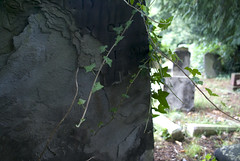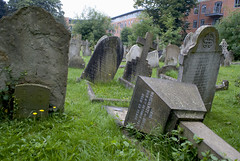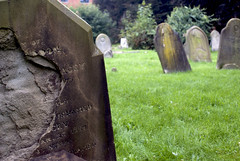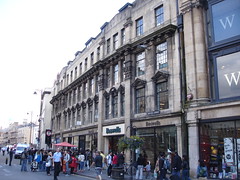Continuing in my research into the murder (or manslaughter as it transpired in the Assizes) of Charlotte Noon by her husband Elijah, I looked – in the Oxfordshire Record Office – at the original burial records for the Parish of St. Paul’s which includes Jericho where the Noons lived in Portland Place, Cardigan Street. I had my suspicions that Charlotte Noon would have been laid to rest in St. Sepulchre’s cemetery off Walton Street and in the records I found this to indeed be the case. I could even see the original plot number ‘G7’ which unfortunately today, won’t help in the identifying of her grave.
Despite this, yesterday I went a second time to St. Sepulchre’s and began to look again for the grave of Charlotte Noon. Maybe, just maybe, it would be one of those which had defied the passage of time and which could still be read – even if with fingers, but I knew this was unlikely to be the case; for one thing, I assume, as they were not a wealthy family, that the grave stone would be have been rather modest and less likely to survive the last 153 years; indeed this seems to be the case. Many of the graves have melted into the ground and only their outlines in the depressed turf indicate their presence. Nevertheless, there was something very poignant about walking around the cemetery knowing that I was in the immediate vicinity of her last resting place – there was, for those moemnts – a physical link between us.
I have walked around the cemetery on several occasions before, but was always oblivious to what it contained; now, as I walk, the whole place feels very different, as indeed does Jericho as a whole.
The cemetery along with streets Jericho are a part of my ‘geographic biography’. Writing about the piece of work I’m showing at the Botanic Gardens – 100 Mirrors (Dolls), I borrowed a quote from the artist Bill Viola, who wrote:
“Looking closely into the eye, the first thing to be seen, indeed the only thing to be seen, is one’s own self-image. This leads to the awareness of two curious properties of pupil gazing. The first is the condition of infinite reflection, the first visual feedback.”
This ‘feedback’ is precisely what I experience when I walk in these places – indeed any places where I know named ancestors of mine once walked – as if we are for that moment, both walking at the same time.






